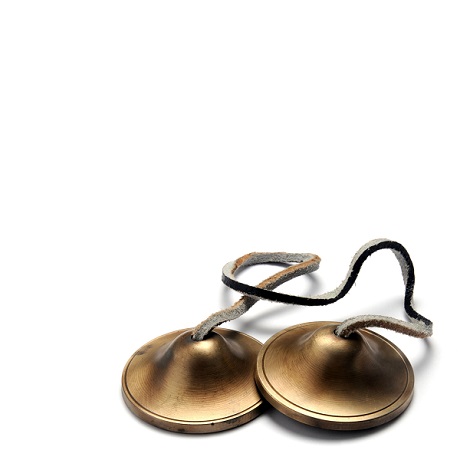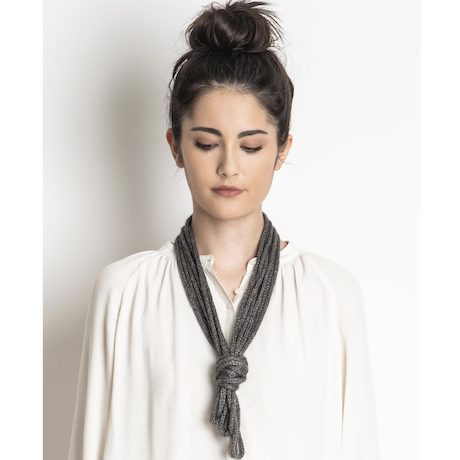Here’s What Happens when a Scared Skeptic Tries Mindfulness, part 2

Yesterday I wrote about my very real — OK, borderline ridiculous — resistance to the concept and practice of Mindfulness (click here for part 1), and I ended that post proclaiming that I am a convert. Here’s why: when teaching Mindfulness, Gina has a way of making the daunting seem not only do-able, but down right logical. I can do logical.
Our workshop started with science. Gina explained that, yes, there is actual science behind Mindfulness, lots of it, and for an analytical (ok, skeptical) person like me, that data somehow validated the practice. Learning about brain chemistry may sound dull, but for me, and I am pretty sure the others in the session, it was riveting.
For instance, did you know that when your brain senses stress – and by the way, the brain perceives all stress as fight-flight-or-freeze, whether it’s truly life-threatening (“I’m being chased by a saber-toothed tiger!”) or not (“OMG the kids cannot find their shoes AGAIN and we are going to be late AGAIN!”) – the amygdala, the part of your brain that senses stress, takes over, flooding your body with adrenaline and cortisol, the stress hormone.* This flood means that your brain departments, for lack of a better word, can no longer communicate meaningfully. The prefrontal cortex, the “rational” executive function department of our brain, literally doesn’t get the information it needs to work properly, thereby decreasing our decision-making capabilities.
Physiologically, this is great if you were truly being chased by a saber-toothed tiger, or if, say, you needed to lift a car off your child…but for everyday stresses? It’s a sledgehammer to kill a fly. And after a while, the rest of your body can’t handle your brain slinging that sledgehammer day in and day out. That’s when the fun stuff like adrenal fatigue and other modern-day maladies arise and wreck your life…and you are so desperate for anything to help that you find yourself in a Mindfulness class even though you think you will never be able to do it and it might make you feel things. OK, maybe that last part is just me.
Happily, Gina explained to us how (many, many!) studies show that Mindfulness can change the brain. Actual brain scans show that with a Mindfulness practice the areas in your brain involved with perceived stress — and mind-wandering, and compassion, and overall well-being — can change.
But how?
Mindfulness is like a biochemical pause; it teaches us not to react but instead to respond.
You may ask, as we in class did, what’s the difference between react and respond? I mean, I edit words for a living and these definitely fall into the synonyms category to me. But there is a difference: react is “Saber-tooth tiger! Run!” Respond is “Wait a second, that’s not a tiger at all.”
It’s through meditation that we learn to purposefully attend to a situation, or a thought, or an emotion, then respond, rather than acting without thinking, as if we were on autopilot. We assess and accept a situation first.
This is not to say you won’t get stressed. And just knowing that this works isn’t enough. You have to actively train your brain to do this. Thus the importance of a regular Mindfulness practice.
Gina guided us through meditation during the session. She asked us to sit tall (“with an air of presence”), not lean against the back of our chairs, place our hands on our knees, close our eyes, then follow her cues for breathing and sensing various parts of our bodies, from our foreheads down to our toes, which she called a body scan.
This body scan requires a decent amount of diligence, believe it or not, but that’s the whole point. Your mind wants to wander, and that’s OK, that’s natural. Gina gently and repeatedly used cues to remind us to bring our attention back. Get distracted by the HVAC unit kicking in? OK, noted, now focus back on this breath…in…and out…in…and out. Your lower back a little sore? Yep, sure is, now breathe…in…and out…in…and out.
When she rang the chimes to signal the end of the meditation, we were shocked to learn that we’d been still for 12 minutes. 12! It felt like three. I felt a very real sense of accomplishment (gold star for me!).

And we all felt very relaxed. I felt almost dopey I was so relaxed, which was both good and slightly unsettling. A woman in class noted that what we had just done would be a good way to get to sleep – why don’t we practice lying in bed? Do we have to be seated tall?
Gina said, sure, a body scan in bed is a great method to calm yourself into sleep (tried it: it is)…but that the relaxation we were feeling was a secondary benefit of Mindfulness. The primary goal is to train your brain, and to do so effectively, it’s important that we aren’t that comfy. Discomfort is part of the process; we are literally training our brains to acknowledge and accept discomfort. This is how we learn not to (over)react so easily.
See, logical!
Gina all but dared me to really commit to Mindfulness; genius that she is, she suggested that I write about what I’ve learned for these Mindfulness Series posts. See yesterday’s post re me being a rule-follower; I will never not fulfill my obligations. So, in order to write this post I started a Mindfulness practice at home. Yes, I committed to this not really for myself (although clearly I needed it) but for Gina, and for content for you readers.
And this was not easy, carving time out of my day, breaking regular routines. Sure, it’s only 5 minutes (I started small), but the list of things I “should” be doing (laundry), and the mild anxiety that the kids would barge in the second I sat down…these felt like legitimate obstacles.
But that’s changed.
Even on days when I haven’t used my trusty guided Mindfulness app (I’m up to 10 minutes on Simply Being, but there are a ton of good free ones, too), I have been better able to respond instead of react. I can calm my racing heart. This is big. I am better able to observe a situation and not automatically absorb (and match) any negative energy I perceive as being cast my way.
In class, Gina also talked about “the second arrow,” a Buddhist concept that’s more philosophy than religion. There’s no way I can do it justice here, maybe that will be Gina’s next post – but it was profoundly moving for me and I have reflected on the concept multiple times over the last couple weeks…and it has made me feel a lot better. I’m gentler on myself…which, for me to say out loud, much less share with thousands of readers, is testament to just how transformative Mindfulness this has been.
So yeah, feelings. But maybe that’s OK?
If you have a toxic coworker or an unrealistic client, if you drive in traffic, if you have kids, Mindfulness is an amazing, sanity-saving tool that every single human needs to know. For real.
Hmm. I just noticed I used the word “tool.”
There is nothing woo-woo about a tool.
I’ll keep practicing.
*(Adrien explains more about cortisol here.)
The next session in our Mindfulness Series is Monday, November 27 then again Monday, December 4. Join us!






